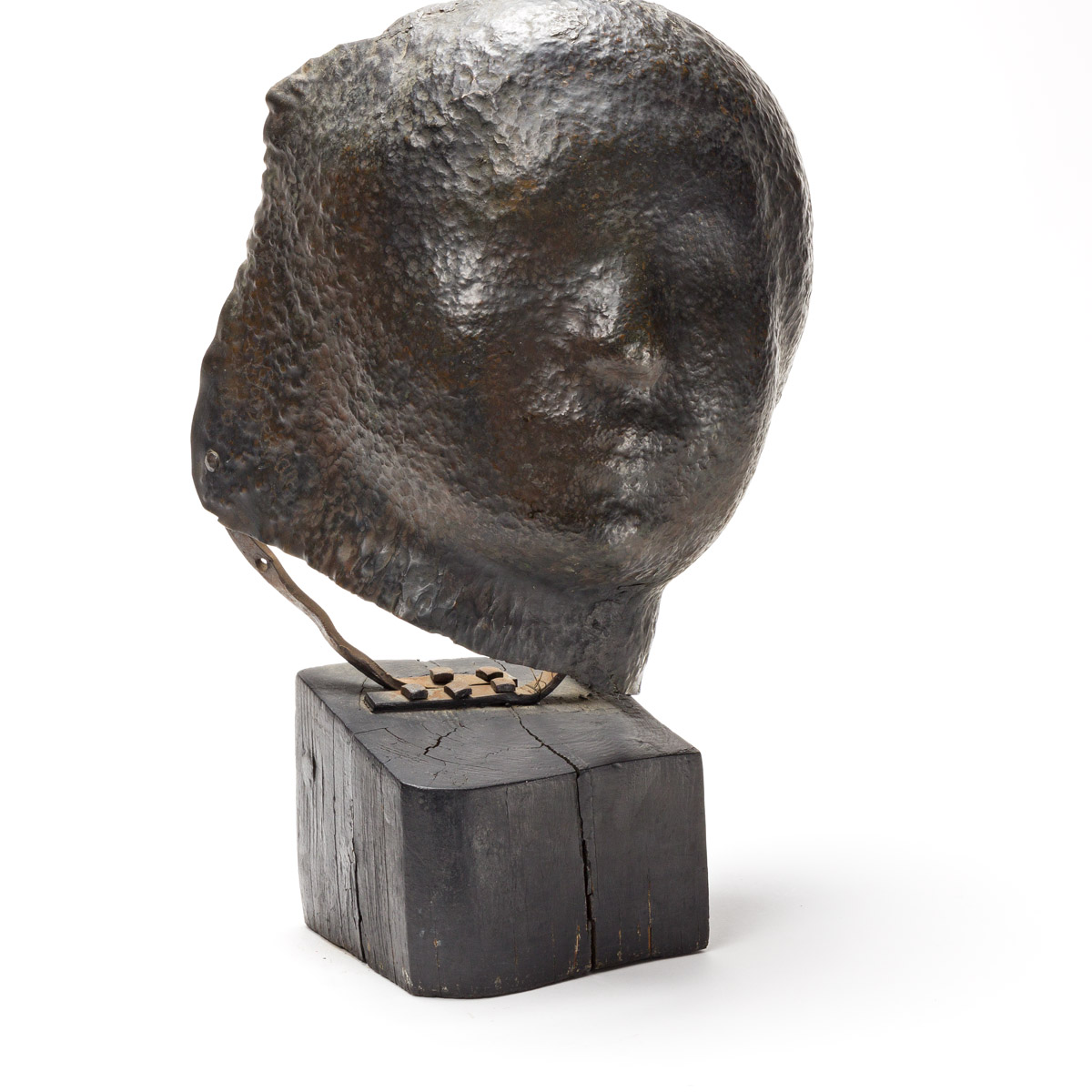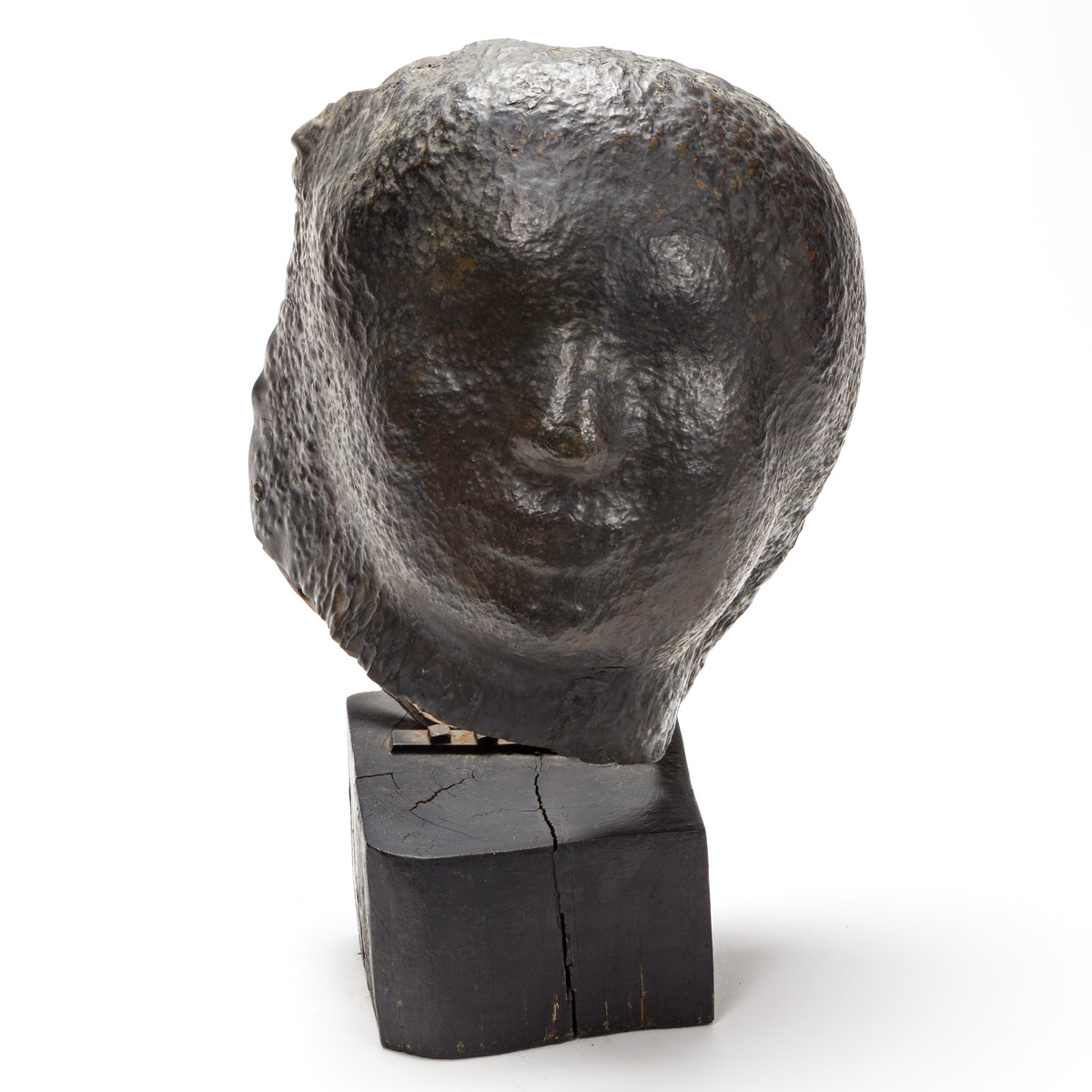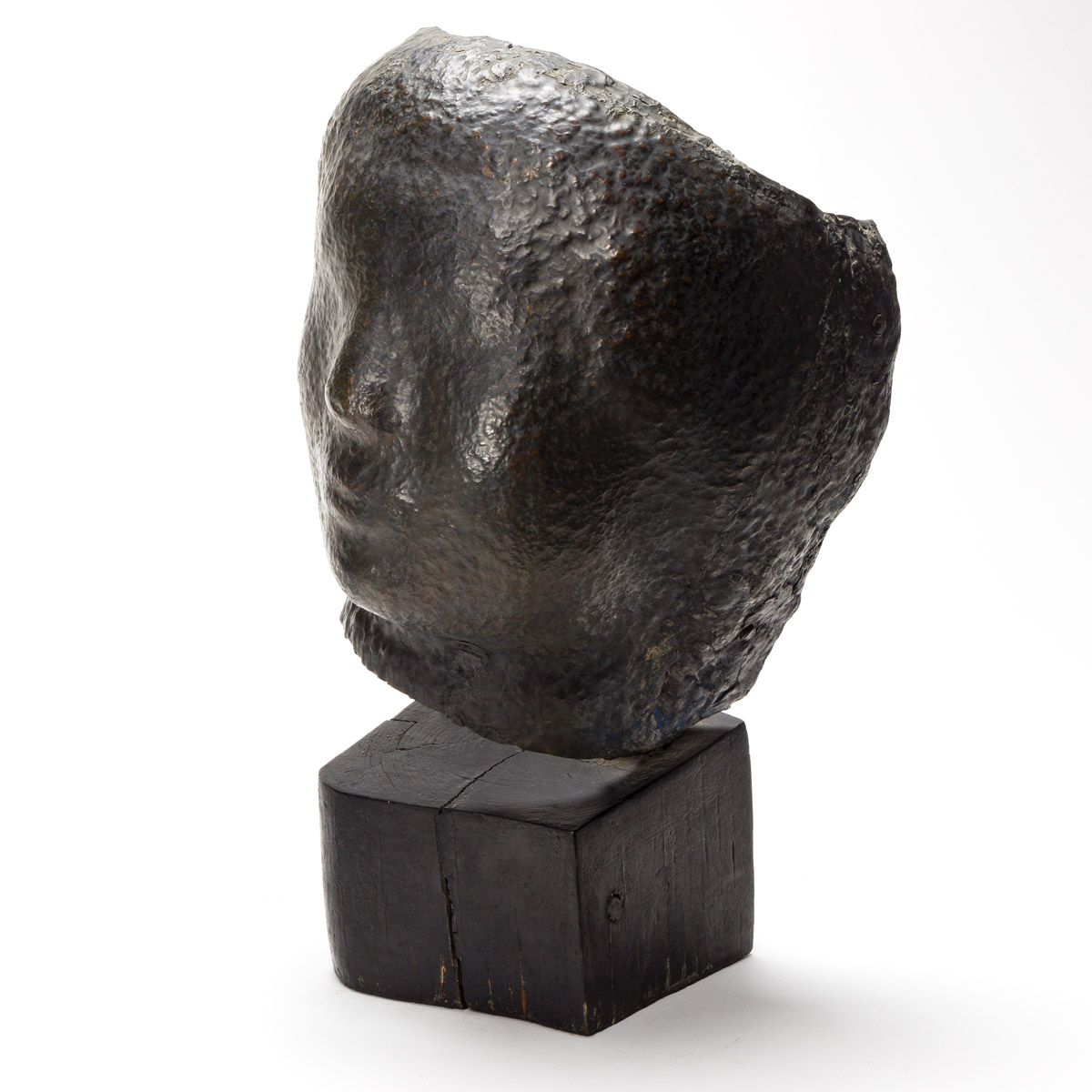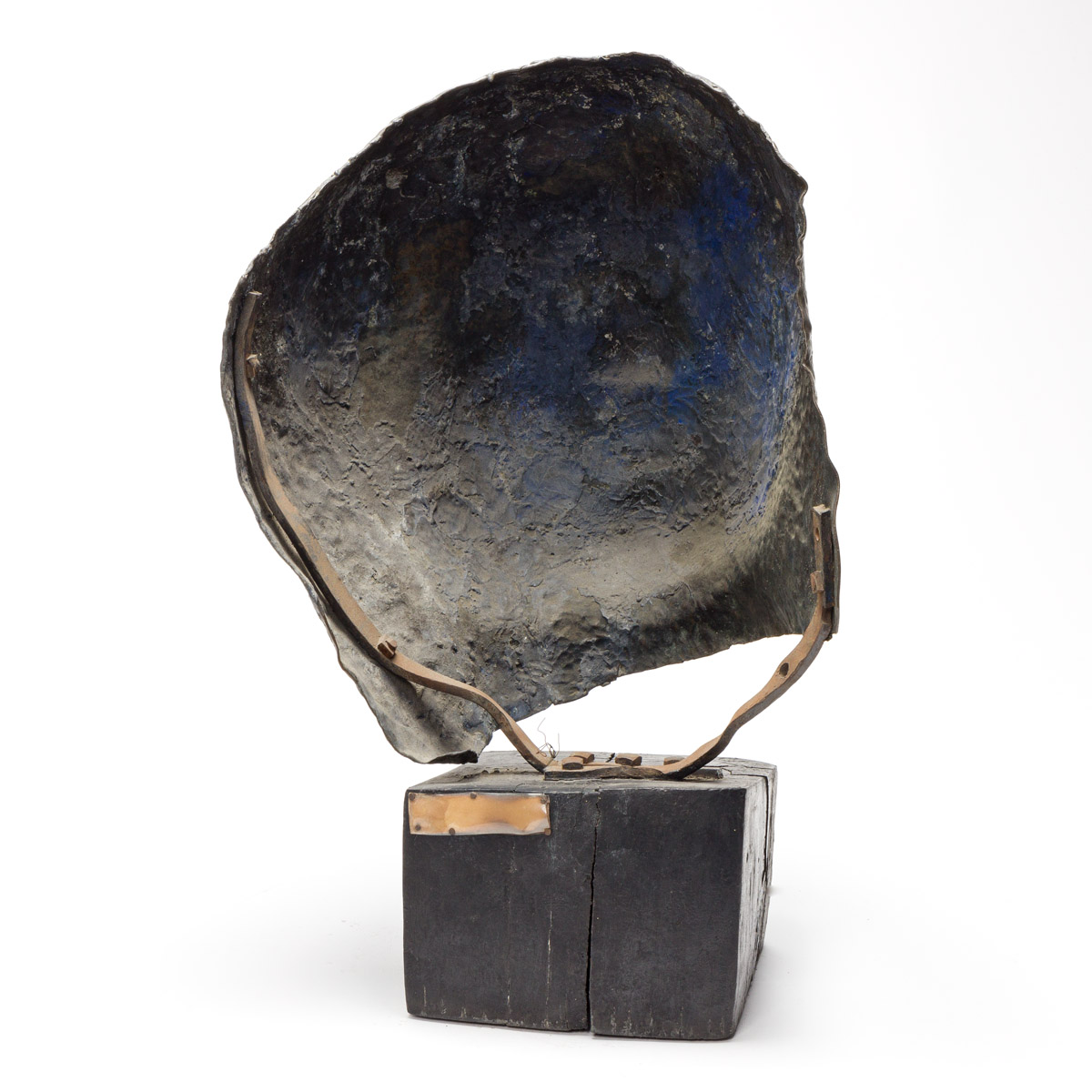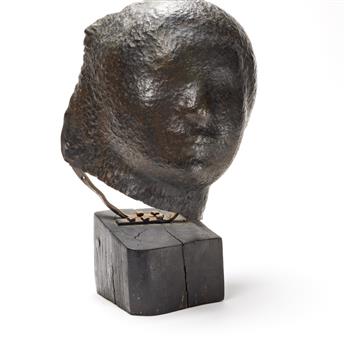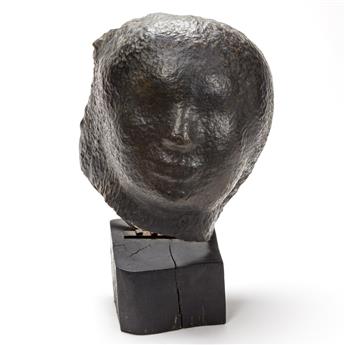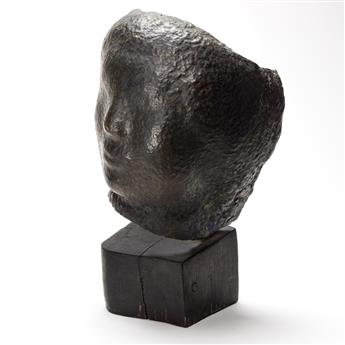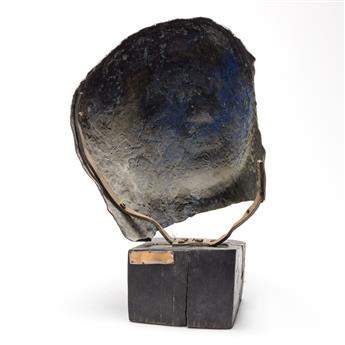Sale 2579 - Lot 145
Price Realized: $ 2,600
Price Realized: $ 3,250
?Final Price Realized includes Buyer’s Premium added to Hammer Price
Estimate: $ 3,000 - $ 5,000
SAUL BAIZERMAN (1889-1957)
Large Head (Self Portrait).
Hammered copper on wood base. 560x330x190 mm; 22x13x7 1/2 inches. Circa 1950.
Exhibited: "Early Twentieth Century American Sculpture," Zabriskie Gallery, New York, February 22-March 13, 1975.
Published: Zabriskie Gallery, Zabriskie Fifty Years, 2004, page 114 (illustrated).
Baizerman was born in Vitebsk, Russia and moved to Odessa with his family as an adolescent. He wished to become a sculptor from an early age, watching his father, a harness maker by trade, hammer metal and leather hides. Saul was surrounded by revolutionary activity and political turmoil in Odessa. At age sixteen, he was imprisoned, though escaped to the United States after serving one and half years for his revolutionary ties.
As a teenager, Eugenie Silverman (1899-1949, see lot 36 and lot 37) immigrated with her family from Poland to the United States. Having completed formal training at the Odessa Art School, Eugenie continued her studies in New York at the National Academy of Design and at the Educational Alliance. Classically trained, with Old Master artists as her model, Eugenie's early output was more muted and figural than the vivid abstractions of her mature œuvre.
In 1910, Saul settled in New York, where he continued his artistic training at the Beaux-Art Institute of Design and attended much of the same schools as Eugenie, Moses Soyer (1899-1974), Raphael Soyer (1899-1987, see lot 67) and Chaim Gross (1902-1991).
Saul and Eugenie married in 1920, at a time when Saul was beginning to become noticed for his small hammered bronze sculptures of the working class. The two artists traveled through Europe during the early 1920s, Saul exhibiting his "Labor Series" in London and Paris before the couple's daughter was born in New York in 1926.
Saul's physically arduous technique of hammering sheets of copper related directly to his portraits of New York laborers. His exertion, evident in the works themselves, is reflected by his subjects. Saul was impeded by a studio fire in 1931 which destroyed all of his copper works in progress, though he was widely exhibited through the 1930s and 1940s.
Eugenie's abstract paintings, which put color theory before form, borrowed from Expressionism. When she did include subjects, they were characterized as being "buried under a blanket of petals" so that the scenes shrunk into the background. She exhibited independently at the Artists Gallery, New York in 1938 and 1950, though she never sold a work. In 1948, the Baizermans exhibited together Saul's monumental hammered work and Eugenie's broadly painted colorful canvases at the Artists Gallery.
Eugenie died in 1949 and Saul's health began to decline. His career in the 1950s was marked by high praise and honors. In 1953, the Walker Art Center, Minneapolis, organized his first retrospective. By the time Saul remarried in 1955, he had already withdrawn from his artistic work. When he died in 1957, he left behind a studio of large sculpture and a group of critics, collectors, and gallerists dedicated to his work, including Virginia Zabriskie and Joseph Hirshhorn. Though Eugenie remained an obscure artist, Krasner Galleries held a favorably received retrospective exhibition of her work in 1961 and Zabriskie Gallery exhibited her paintings from 1969 through 1988 and most recently in 2000.
Exhibition Hours
Exhibition Hours
Aliquam vulputate ornare congue. Vestibulum maximus, libero in placerat faucibus, risus nisl molestie massa, ut maximus metus lectus vel lorem.



